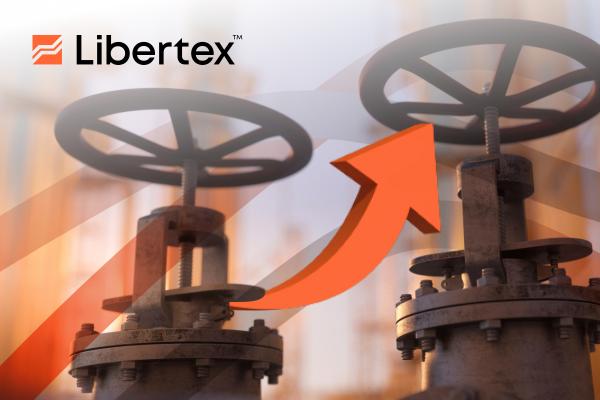After the Covid crisis, post-pandemic inflation, and volatile markets, many had high hopes for 2024 and expected a long-overdue normalisation. Unfortunately, it increasingly looks like we're in for more uncertainty ahead as geopolitical tensions rise both in Europe and the Middle East.
While things are indeed looking up for stock and crypto investors, commodities have been rather stagnant since their huge gains in the summer of 2022. Oil famously reached a heady height north of $120 a barrel, while the Natural Gas EU Dutch TTF topped EUR 330/MWh – more than ten times its current level. Even the more volatility-insulated Henry Hub Natural Gas Spot Price was down around 80%.
However, after much sideways movement, prices on energy resources are making significant moves to the upside. Brent is up around 5% to $81 per barrel over the past month, while Light Sweet and WTI are both up closer to 10% over the same period. The key natural gas indices have also seen a notable uptick, and this despite the end of the heating season soon approaching. But what are the reasons behind this sudden resurgence, and how can we expect the situation to develop over the rest of the year?
Dangerous times
It's no coincidence that the latest oil price rises have followed virtually exactly in line with increasing instability in the oil-rich region of the Middle East. The latest flashpoint between major producers Iran and the US has been a particularly powerful catalyst. Despite all the talk about electrification and green energy, oil is still the lifeblood of the world's economy, and any potential threat to supply is immediately counterbalanced by price increases on the spot markets.
The existing crisis in Eastern Europe and associated measures had already curtailed the supply of crude significantly, and this additional factor simply added fuel to the fire. Meanwhile, demand has actually increased as China's industrial sector continues to recover. At the same time, Yemeni actions have forced ships delivering goods to Europe to travel around the Horn of Africa as opposed to cutting through the Suez Canal, translating to significantly higher fuel consumption.
These natural factors are, of course, naturally limited in time, but there's always a risk that they could get worse before they get better, and their unpredictable nature makes them hard to guard against. Looking back at the start of the Syrian war in 2010, we see that prices didn't reach a peak for at least 18 months and remained high until as late as 2014, which would suggest that we may be in for a protracted bull market.
Don't forget OPEC
It's all well and good discussing the natural factors at play, but when it comes to oil, there's a pretty huge elephant in the room: OPEC+. While supply may be reduced and demand increased, we have to remember that the world's oil-producing cartel has a significant artificial impact on real supply. We will all surely remember that Saudi Arabia and Russia agreed to maintain voluntary production cuts amounting to 1.3 million barrels per day for much of last year, and just as the agreement was about to expire, the two OPEC behemoths agreed to extend it into the first quarter of 2024.
In fact, they have also convinced the other members of the group to add additional cuts of 900,000 bpd. This means that the total voluntary production cuts implemented by OPEC+, which accounts for around 40% of the world's total supply, now amount to 2.2 million bpd. With an average global production of 94 million bpd, it's clear that any change to this voluntary shortfall could easily affect prices significantly.
Another important factor is the potential for grey market fuel supplies to help alleviate any supply-side problems that may arise as a result of a worsening of the geopolitical situation. Russian, Iranian, and Venezuelan crude has been subject to international sanctions and price caps for some time, and yet countries such as India frequently import it at favourable prices and then refine it into value-added products that can then be freely sold on the open market, thus bypassing economic restrictions. In theory, therefore, runaway prices should be held in check by strategic supply increases in response to demand spikes. However, it's also important to bear in mind that high prices suit OPEC+ members just fine, so the likelihood of near-term price increases remains high.
Trade oil, gas and more CFDs with Libertex
With Libertex, you can trade CFDs in a wide range of underlying assets from stocks, ETFs and forex to crypto, metals, and, of course, oil and gas. Trade long or short CFD positions in Brent, WTI, Light Sweet, or Henry Hub Natural Gas. For more information or to create an account of your own, visit www.libertex.org/signup






